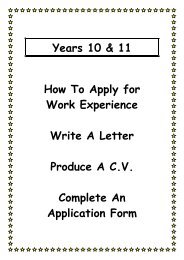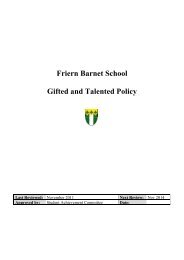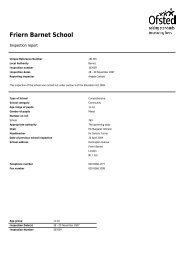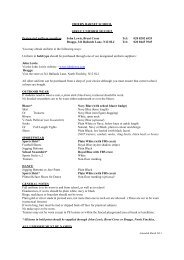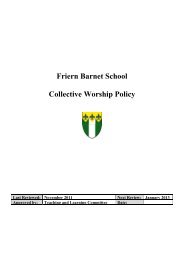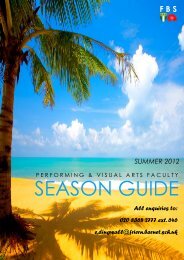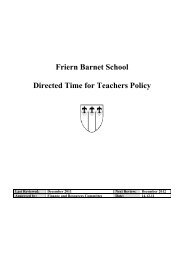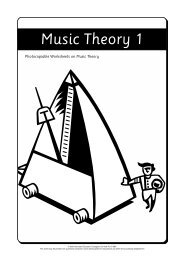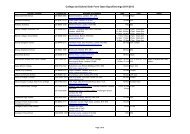VOL 166 Music Theory 2 - Friern Barnet School
VOL 166 Music Theory 2 - Friern Barnet School
VOL 166 Music Theory 2 - Friern Barnet School
You also want an ePaper? Increase the reach of your titles
YUMPU automatically turns print PDFs into web optimized ePapers that Google loves.
Name: ____________________ <strong>Music</strong> <strong>Theory</strong> 2 Worksheet<br />
WRITING FOR STRINGS (Part 2)<br />
By lightly playing the string at set points along the string a series of natural harmonics can be<br />
produced. The set points where these faint secondary sounds vibrate in addition to the main<br />
note are called nodes. If these are played on an open string it is called a natural harmonic. If<br />
you firmly press down the string, this is called stopping, and then play at one of the set points<br />
it is called an artificial harmonic. These are indicated by the signs below. Harmonics are not<br />
loud clear notes but they produce more of a colour to the note.<br />
q o<br />
As with any instrument the first consideration when writing for strings is to consider the pitch<br />
range of the instrument.<br />
Violin pitch<br />
Cello pitch<br />
O<br />
q<br />
natural harmonic artificial harmonic<br />
Viola pitch<br />
usually written in alto clef<br />
Double bass pitch<br />
the double bass<br />
sounds an octave lower<br />
than written<br />
Col legno (Italian meaning with wood). Use the wood of the bow to play.<br />
Sul ponticello (Italian meaning on the bridge). Bow as near to the bridge as possible. This<br />
makes a scratchy, creepy effect.<br />
Sul tasto (Italian meaning on the fingerboard). Bow over the fingerboard. This creates a very<br />
mellow sound.<br />
www.keynoteseducation.com © 2004 Keynotes Education Crossgate Cornwall PL15 9SX<br />
This sheet may be printed from a personal computer and/or photocopied for educational use within the purchasing establishment<br />
30




